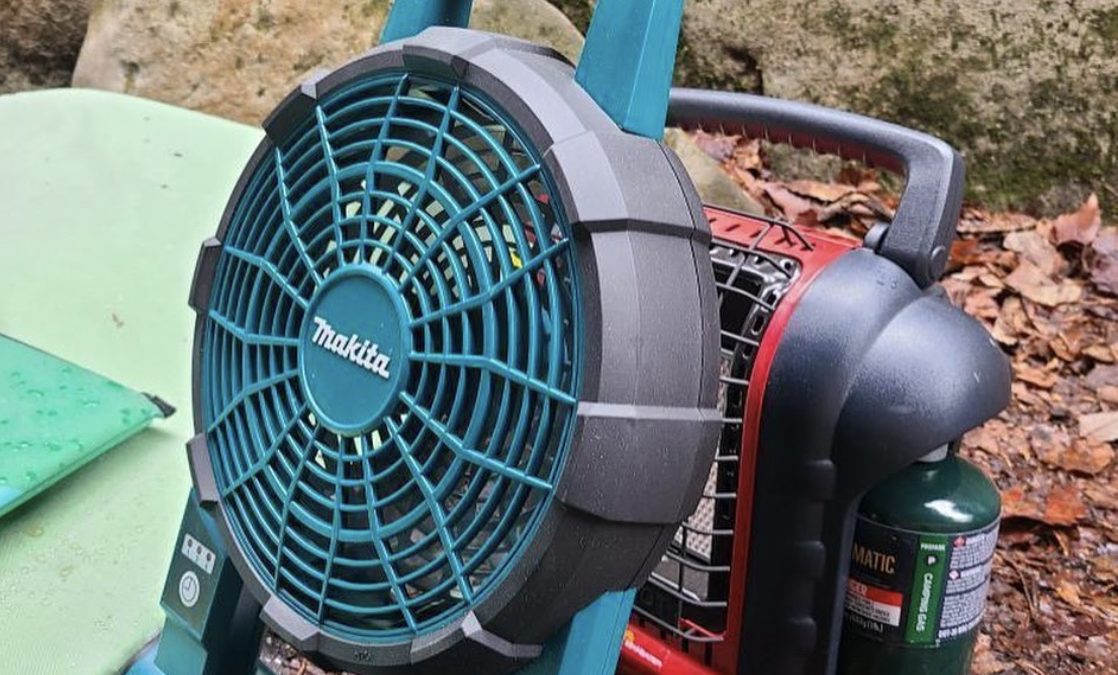Best Bouldering Fans for 2022
The rise of bouldering fans have popularized the flat-folding Makita, but is it really the best fan on the market?

With Spring almost upon us, boulderers will prepare for the crisp, yet comfortable temperatures of the post-winter season. Regardless of how you like to approach a boulder problem, bringing the right equipment can make a difference in preserving optimal conditions for as long as possible. Electric fans are game changers.
Over the last years, rechargeable electric fans made their way into outdoor spaces. They give climbers crisp tips and less-humid rock. Having hard, dry skin is essential to climbing near your limit, especially on the friction dependent grips so often found in outdoor climbing.
Furthermore, climbing on dry grips makes an otherwise humid problem more accessible. Which one should you buy?
Makita Cordless Job Site Fan
If you have followed outdoor bouldering on YouTube, you will have noticed the Makita fan. The flat-folding power tool is arguably the most popular climbing fan in North America. This blue, cordless fan holds 5.5 hours of charge with 5.0Ah LXT battery. It offers the reliability route setters have come to expect from their Makita impact drivers. The tool also has a 3-year limited warranty from the date of purchase and can be powered through an AC adapter for those that want to keep their session going at home on their wall.
The Makita 18-Volt Lithium Ion batteries have the fastest charge times in their categories. A problem with the fan is that the battery and the charger are sold separately. This is true of all the fans we will look at. While the Makita fan seems to only cost $89.00 US, after you buy the charger and one 5.0Ah battery, you could be spending up to $343 USD. WIth that said, you can spend a lot less on the Makita by purchasing more affordable batteries. In fact you can spend as little as $208.00 through Home Depot if you purchase the less powerful 4.0Ah battery. Still, while our most expensive option, the Makita offers unrivaled foldability making it the easiest large fan to slide into a crash pad. Buy it here.
Ryobi One+ Fan
This more affordable option from Ryobi comes with a three-year manufacturer’s warranty and offers many of the same features as the Makita. The greatest difference between the two fans is the shape, although, anecdotally, the Ryobi has been said to be the more powerful of the two fans, but power is based on the battery you purchase. The clunky design folds poorly into a crash pad, but it is robust and can handle a ton of abuse.
Like the Makita, you can power the Ryobi through an AC current for long term use indoors. Together, the price for the fan, the battery and the charger comes out to 178.97 USD when you buy the charger and 4.0Ah battery. This is significantly more affordable than the Makita. Buy it here.
Milwaukee M18
The M18 is easily the most powerful fan in our line up, and, at $258.00 USD for fan, battery and charger, it is still more affordable than the Makita. In the end, a climber will go with the Makita simply due to the ease of use it offers. A person buys the Ryobi for its affordability. The M18 is for the power-hungry boulderer. With 17 hours of run time on low, 18 mph maximum air velocity, and three speed settings the Milwaukee is the most powerful fan with an unmatched run-time. On its highest setting, it spins at 2,350 RPM, 650 revolutions per minutes quicker than the Makita at its highest setting.
The Makita only comes with two settings, the lowest of which is 1200 RPM. The M18, by comparison, runs at three settings: 2,350 RPM, 1,900 RPM, and 1,370 RPM. That means that the M18 can run for 17 hours on a setting still higher than the lowest setting on the Makita.
It is more compact than the Ryobi and also costs quite a bit more. Like its peers, the fan can run on an AC current. It advertises itself to be capable of circulating air 40 feet. Buy it here.
Featured image by Lily Nguyen via Only Makita.


